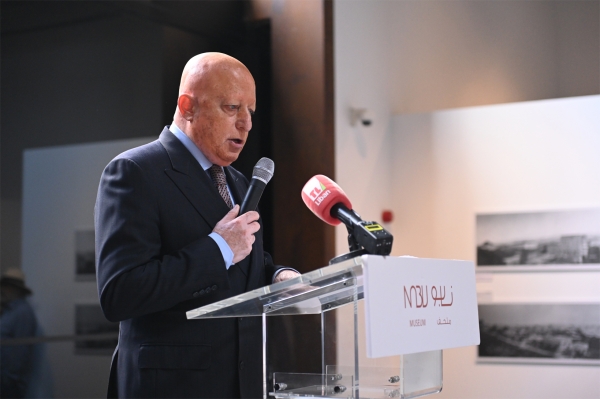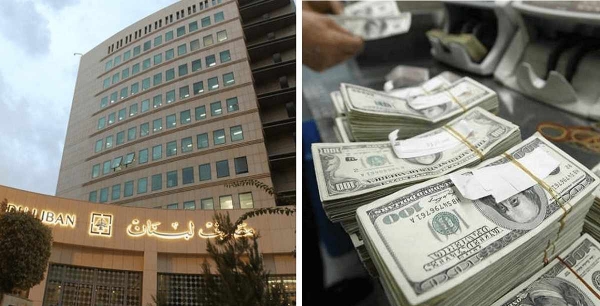Lebanese Currency From 14,000 billion in 1996 to 83,000 billion in 2017
Lebanese Currency From 14,000 billion in 1996 to 83,000 billion in 2017
By virtue of the Code of Money and Credit of 1963, Banque du Liban is vested with the exclusive right to issue the Lebanese currency, provided that “the notes of a value equal or over one pound shall bear the facsimile signature of the Governor and First Vice-Governor of the bank.”
Currency Protection
The code requires BDL to keep “bullion and foreign exchange providing a safe cover for Lebanese currency equivalent in value to at least thirty percent (30%) of the money it issued and of its deposits at call, provided that the ratio of the said bullion and foreign exchange to the value of the money it issued is not under fifty percent (50%).”
Notes and Coins Issued
Lebanese currency issued until June 2017 amounted to LBP 6,910 billion compared to LBP 2,954 billion in 1996. Table No.1 shows the distribution of money by denomination.
The 100,000-pound denomination now represents 67% of the volume of currency issued by value, compared to 36.6% in 1996. During this period (1996-2017), the currency issued by BDL has risen by LBP 3,956 billion or 134%.
.jpg)
Table No. 1: Distribution of Lebanese currency by denomination.
|
Denomination (LBP) |
1996 |
2002 |
|
2008 |
2017 (June) |
||||
|
- |
Number (million) |
Value (LBP million) |
Number (million) |
Value (LBP million) |
|
Number (million) |
Value (LBP million) |
Number (million) |
Value (LBP million) |
|
1 |
29 |
29 |
29 |
29 |
|
- |
- |
- |
- |
|
5 |
22.4 |
112 |
22.4 |
112 |
|
- |
- |
- |
- |
|
10 |
14.9 |
149 |
14.9 |
149 |
|
- |
- |
- |
- |
|
25 |
6 |
150 |
8 |
200 |
|
2.4 |
60 |
4.760 |
119 |
|
50 |
21.24 |
1,062 |
28.08 |
1,404 |
|
13.520 |
676 |
14.020 |
701 |
|
100 |
22.86 |
2,286 |
37.960 |
3,796 |
|
37.120 |
3,712 |
41.810 |
4,181 |
|
250 |
40.628 |
10,157 |
49.452 |
12,363 |
|
54.088 |
13,522 |
127.876 |
31,969 |
|
500 |
14.402 |
7,201 |
38.478 |
19,239 |
|
59.474 |
29,737 |
99.640 |
49,820 |
|
1,000 |
364.485 |
364,484 |
182.428 |
273,643 |
|
89.527 |
89,527 |
147.879 |
147,879 |
|
5,000 |
26.243 |
131,215 |
19.282 |
96,410 |
|
16.972 |
84,860 |
27.362 |
136,813 |
|
10,000 |
45.688 |
456,880 |
51.610 |
516,100 |
|
15.626 |
156,260 |
13.943 |
139,434 |
|
20,000 |
20.941 |
418,820 |
15.382 |
307,640 |
|
12.022 |
240,440 |
19.787 |
395,749 |
|
50,000 |
9.591 |
479,550 |
13.175 |
658,750 |
|
15.905 |
795,250 |
26.924 |
1,346,204 |
|
100,000 |
10.820 |
1,082,000 |
18.574 |
1,857,400 |
|
17.458 |
1,745,800 |
46.573 |
4,657,380 |
|
Total |
649.198 |
2,954,096 |
528.721 |
3,747,235 |
|
336.512 |
3,114,771 |
570.574 |
6,910,248 |
Source: Quarterly reports issued by BDL (1996-2017).
Note: As of November 24, 2007, banknotes of denominations of LBP 1, 5, 10, 25, 50, 100, and 250 were withdrawn from circulation, while coins with value of LBP 25, 50, 100, 250, and 500 were kept in circulation.

Table No.2: Lebanese currency in circulation and in banks (1996-2017).
|
Year |
Currency in circulation (LBP billion) |
Currency in banks (LBP billion) |
Total (LBP billion) |
|
1996 |
1,161 |
12,839 |
14,000 |
|
2002 |
1,375 |
19,028 |
20,403 |
|
2008 |
2,174 |
35,150 |
37,324 |
|
2017 (June) |
4,652 |
78,456 |
83,099 |
This increase in the volume of currency reflects the level of inflation experienced in Lebanon during this period. The volume of currency has increased from LBP 14,000 billion in 1996 to LBP 83,000 billion in 2017, i.e. by LBP 69,000 billion or about 493%
In light of the increase in public debt, economic recession, and the persistent public budget deficit, the Lebanese lives in a state of fear and anxiety over monetary and financial stability, especially when political or security crises arise. They rush to exchange some of their deposits and money in Lebanese pounds into foreign currencies, namely the U.S. dollar, in order to maintain their purchasing power in case the Lebanese pound collapses. Fear may occur if remittances to Lebanon in foreign currency decline, overseas remittances increase, or if sanctions are imposed. If this happens, it may destroy the banking and financial sector.








Leave A Comment